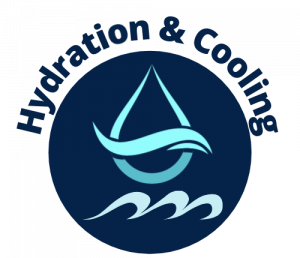
Sports can be a wonderful healthy outlet for children, offering opportunities to learn about sportsmanship, maintain physical activity, develop friendships, and simply have fun. Despite these numerous benefits, youth sports participation isn’t without potential downsides. While children typically heal rapidly and recover more quickly than adults, they aren’t immune to injuries. In fact, youth sports injury rates have been steadily climbing since 2007.
One significant factor contributing to this increase is the rise of single-sport specialization. Previous generations typically rotated through different sports with the changing seasons: perhaps football or soccer in autumn, basketball during winter, baseball or tennis in spring, and so on. Today’s sports landscape rarely accommodates multi-sport athletes. Fall soccer seamlessly transitions into winter soccer camps, which lead to pre-season training, spring leagues, and summer intensives – a pattern replicated across numerous sports.
Although many young athletes train diligently to perfect their skills, the constant stress on their developing musculoskeletal systems eventually takes a toll. From minor sprains and strains to injuries typically associated with older athletes, young players may suddenly find themselves sidelined – leaving concerned parents searching for solutions.
Overuse injuries in young athletes have become increasingly common. According to various sources, the pandemic further exacerbated this trend last year, contributing to unusually high injury rates among young players. Compressed seasons often resulted in back-to-back games without adequate recovery time. These young bodies simply couldn’t withstand the athletic demands placed upon them. When seasons were reduced by a quarter or even half their normal duration, injuries spiked in a demographic already experiencing elevated injury rates.
Some young athletes now face limiting injuries or undergo surgery before even reaching high school. With children eager to play and parents wanting to support them, what should concerned parents do? Based on experience treating patients of all ages and activity levels – including numerous young athletes annually – here are our recommendations:
1. Take a break
Don’t just suggest breaks – actively encourage them. Perhaps you’re raising the next sports superstar, but even future champions achieve greater heights when they’re healthy rather than burned out and fighting chronic pain. Consider skipping that intensive summer camp in favor of family camping instead.
2. Don’t force solo sports early
You might hope your child follows your athletic footsteps, but they may excel in entirely different sports. Allow children to experiment with various activities and encourage participation in multiple sports throughout the year.
3. Encourage play for its own sake
The vast majority of children who begin sports at early ages burn out by late middle school or early high school. Pressure from parents and coaches significantly contributes to young athletes abandoning their sports. Let children play because they enjoy it, especially during younger years. Kids who participate for fun and experience less stress may be less likely to overexert themselves and sustain injuries.
4. Make a PT part of your arsenal
Physical therapy isn’t exclusively for post-surgical rehabilitation. A physical therapist can provide invaluable assistance both in treating already-injured student athletes and in preventing injuries. They can recommend age-appropriate stretching and strengthening exercises to help your young athlete stay in the game – and alert you to warning signs specific to their sport.
5. Don’t rush to return
We all know someone with a chronically troublesome knee or shoulder – lingering effects from high school sports injuries. Ensure your young athlete doesn’t develop lifelong chronic issues by consulting with your physical therapist after any injury and following their guidance for safely returning to sports.
6. Value prevention over treatment
Did you know female soccer players face significantly higher ACL injury risks? Or that after one ACL surgical repair, the likelihood of needing additional surgical interventions increases? Your child’s physical therapist understands these patterns. They can work with you and your athlete to identify and correct improper movement patterns while strengthening supporting muscles. Preventative care is always preferable to rehabilitation.
7. Recognize injury warning signs
Does your child complain of pain that disrupts sleep? Pain while resting? Is pain affecting their movement? Has discomfort persisted for several days without improvement? If you’ve answered yes to multiple questions, your child should receive professional evaluation.
While you can’t prevent every potential injury for your young athlete, taking precautions and working with healthcare professionals when needed helps children stay healthy and active. For additional resources, explore specialized programs for various sports and activities.



